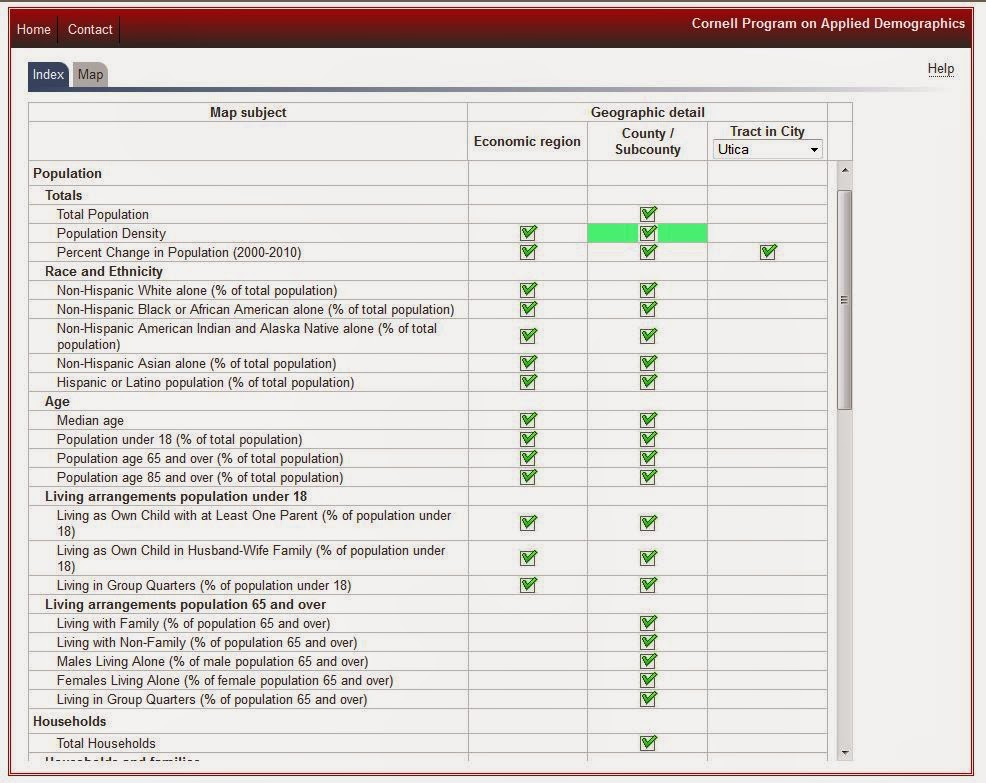The outline on the 1980 census map below provides you with a better idea of where the West Utica neighborhood basically is. It largely lies south of the NY Penn railroad, is bordered on the west by the city line which encompasses Utica College, its south edge is defined by Burrstone Road and finally to the east it is bordered by Genesee St. until it snakes its way back toward the Arterial around Cornelia St. heading west then north along routes 5, 8 and 12.
 |
| Click to Enlarge |
This area has gone from about 40% owner occupied housing in 1980 to only around 30% as of 2010. More than half of the housing (52%) are renter occupied units which is virtually identical to what existed 30 years ago when 51% were renter occupied. The biggest difference is really in the number of vacant structures - in 1980 roughly 6% of the housing was vacant; now 9% remains unoccupied.
Below is an infographic that compares the age, sex, race, nativity, employment, education, income and poverty levels of those who have found the West Utica neighborhood to be their home, in 1980 and in 2010. There are substantial changes in who lives there now as opposed to 30 years ago. Click to enlarge the graphic for easier viewing !
 |
| Click to Enlarge |































